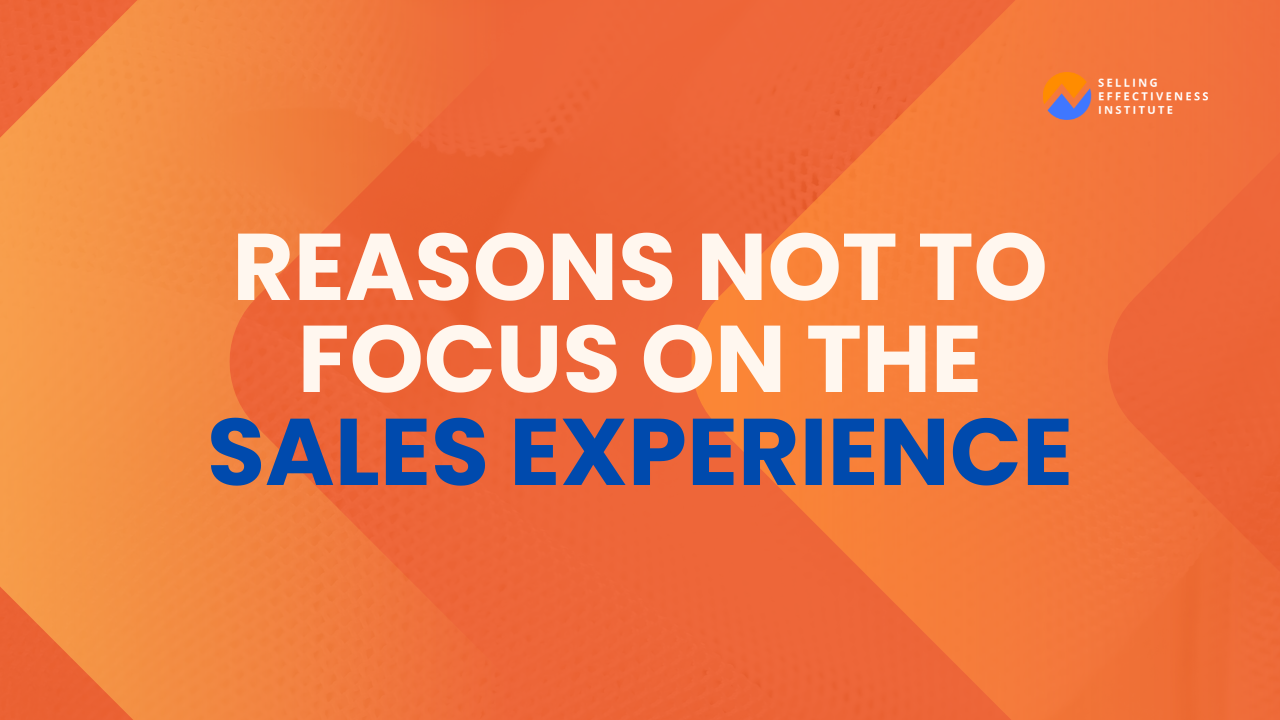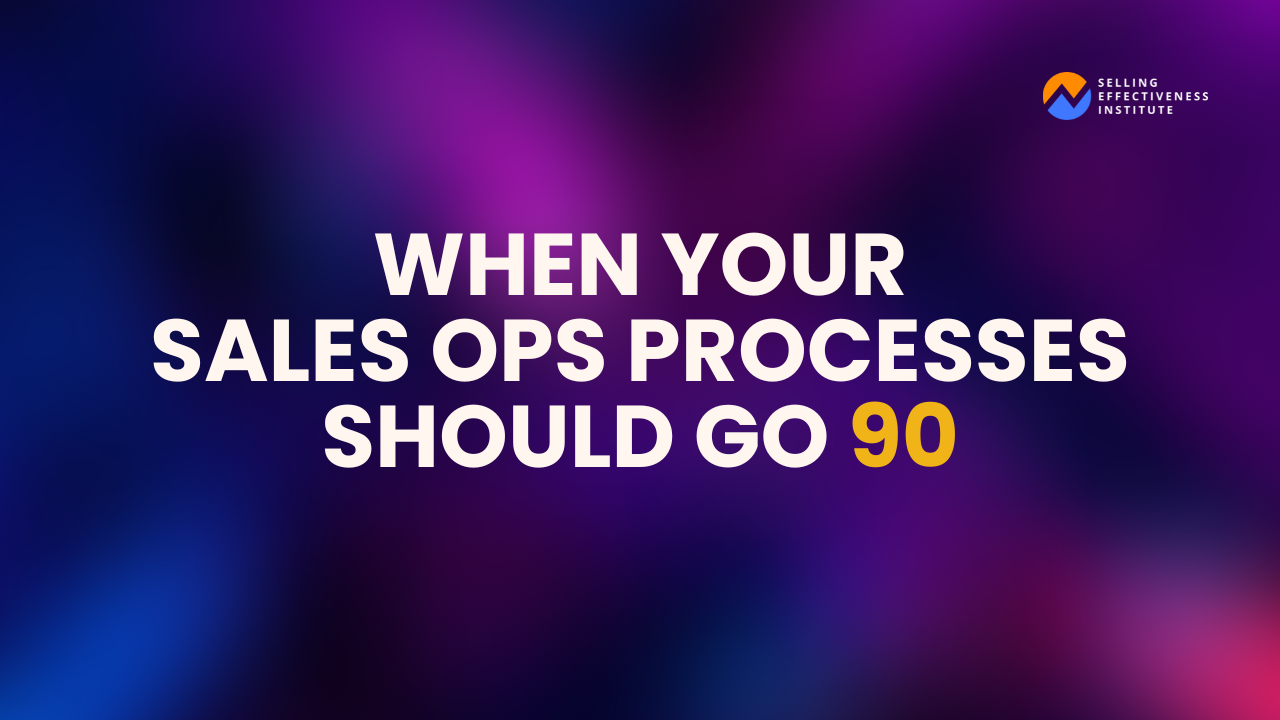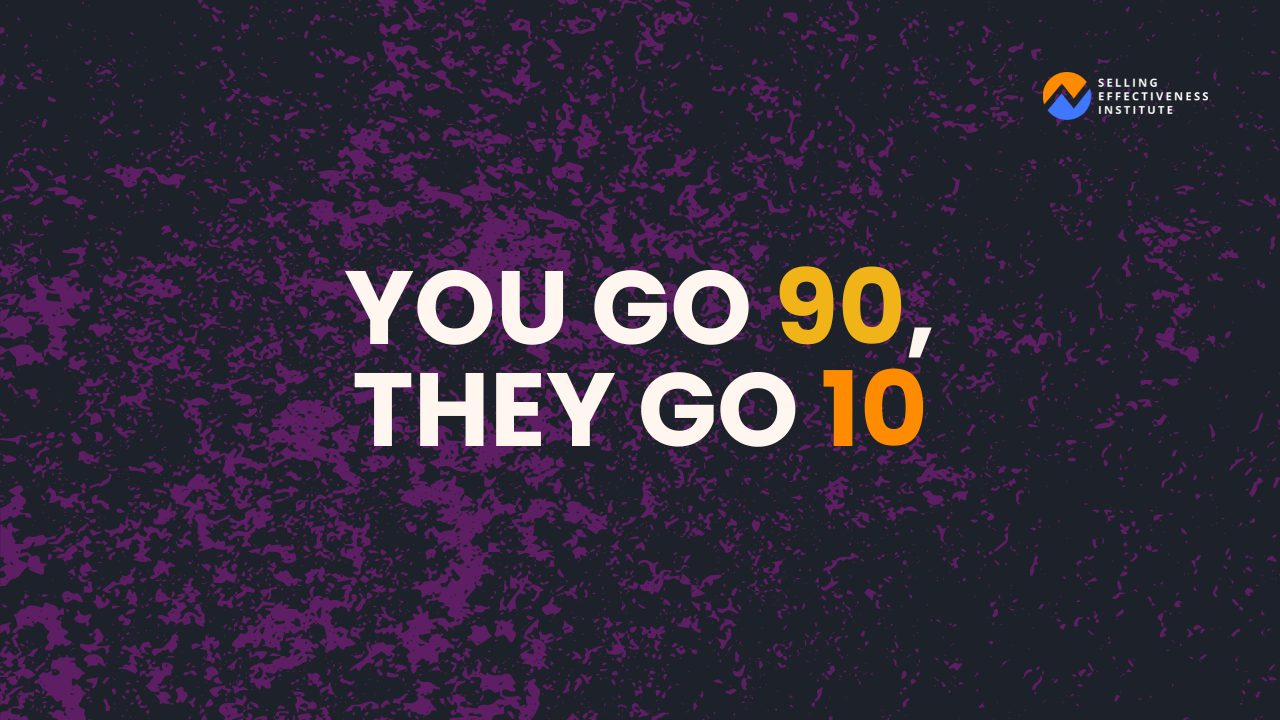Are you telling stories in the wrong way?
E234: Sell With A Story, with Paul Smith (Part 3)
Are you telling stories in the wrong way?
Yes – there is a correct way to tell a story.
I wrap up the conversation I had with Paul Smith in this episode. Make sure to check out the first two segments, and use the links below to connect with Paul.
Book your free Sales Power Call with Jason
Enroll in the Persuading Like A Professional Online Mini-Course
Download The Power of Authentic Persuasion ebook
Connect with Jason on LinkedIn
Connect with Paul on LinkedIn
-
Show Transcript
Jason: Welcome back to another fantastic episode of the sales experience podcast. So excited that you're here. This is the final part of the three part segment of the conversation I had with the amazing storytelling, Paul Smith. If you didn't make sure to listen to parts one and two, the past two days, subscribe and if possible rate and review this podcast so other people can find it and share it because the biggest thing that I'm focused on right now is helping change the way that sales is viewed and how people operate in their sales role and things like this episodes like this and conversations with people like the amazing Paul Smith should be helping people get better at sales and creating a better sales experience and thus getting better results for themselves.
So here is this episode. And at the end, Paul shares his links, but you can also go to cutter consulting group. com and find the transcript, his links as well, and lots of other resources for you, your sales career, and your business.
Paul: It's the minority of the time that you spend talking will be storytelling, but those would be the most impactful, memorable things that you say.
Jason: I love it. And I have definitely seen the other end that you mentioned, which is more stories, a lot of stories with salespeople that either are unconscious of it. And I don't want to say inconsiderate, but more self centered on their story sides like that sometimes I see where that happens and they just all they care about is telling their story or the stories and they just want to talk about themselves or the other end of that spectrum where they're using lots of stories is maybe insecure and worried that the person isn't going to like them or buy from them.
So they go really heavy on the stories to just convince somebody like, Hey, you can trust me. You can buy from me. You should really like me. And I have tons of stories of just in general, from cooking to successful customers and they spend too much time. And it's I appreciate the fact that you have that kind of down to a number where.
Here's a good, successful amount of some stories, then also work.
Paul: And again, I think the stories are part of the work. But yeah, if it gets to be 50, 60, 70 percent of what you're doing is storytelling. I'm sure somebody can pull that off. I don't know that I could. But zero is also a problem, right? If you're not telling any stories, you're probably missing out on a big opportunity.
Jason: And that's where I coach people relative to using the strategy in different ways, especially about being excited, which triggers it. Where you want to act like this, but what you're saying is don't do no stories because nobody enjoys something like the DMV where they're getting that kind of experience.
You don't want to be like that, right? Where it's okay, that was terrible and painful. You want some kind of relatability. Yeah. Yeah. I agree. So what are other ways in all of your research that you've seen where salespeople have either failed to use stories or failed with stories, or do you have stories about failures with stories?
I'm just thinking about what other cautionary tales can we give to salespeople where they can look out for and get some change from it?
Paul: Yeah. So a couple of things come to mind. One is never announce that you're going to tell a story, right? So saying. Jason, that's an interesting question. Let me tell you a story.
No, don't do that. I thought that's what you do.
Jason: I just think of grandpa on the porch. Let me tell you a story.
Paul: Yeah and there are some people that works with, but in doing my research and asking the question of those buyers, what makes the hairs on the back of your neck stand up? Many people, in fact, I think it's most people, have a negative visceral reaction to hearing the words, let me tell you a story.
And I have a number of hypotheses for why that is. When you say that, what people expect is a long, boring, 15 minute story about the barbecue you had this weekend, which is completely irrelevant to the conversation we're having. So basically saying, let me tell you a story, and if it's grandpa and you're out on the porch on a Saturday night, that might be great.
But if it's a salesperson in your office at 9 o'clock on a Monday morning, what you hear is, let me waste your time for a few minutes. Yeah. So don't announce that you're going to tell a story, just start telling the story. They'll figure out that you're, they're listening to a story, but when you announce it, and some people, by the way, where I grew up, the word story is a synonym for the word lying.
Paul Smith, if you don't quit telling stories, I'm going to switch your behind. That's what my mom used to tell me. So a number of people just the word story sets up some barriers that are not going to help you. So you should tell stories, but you shouldn't tell people you're going to tell them a story, right?
Unless they're five year olds and it's, all right, boys and girls gather around, it's story time, works great for the kindergarten teacher, but you're a grown up and you work with grown ups. So don't tell them you're going to tell them a story. Okay. The other thing is don't apologize or ask permission.
And you hear that all the time, right? Somebody will say, you'll be in the middle of a meeting and they'll say, Oh can I just tell a quick story? I promise it'll just take a minute, right? What does that communicate to you about how important they think the story is?
Jason: They think it's important, but maybe not relevant and they're unsure and it doesn't sound very confident instead of just coming out with it.
Paul: If they really thought it was important, they wouldn't be apologizing for it and asking permission to tell it. Leaders don't ask permission to lead. Do they? No, they just lead. Salespeople don't ask permission. Deliver a sales pitch. As long as you've already gotten permission to be in the room and give your sales pitch, don't ask permission again.
That's what you're there for. Apologizing and asking for permission. What that communicates is I don't think this is as important as what was going to be said anyway. But I want you to let me tell it anyway. If you don't believe it's as important as what was gonna be said, then don't tell it.
Get back to the bullet points on slide number 72. But if you do think it's important, just tell it. Just start telling the story at the point in the conversation where the story goes and it'll be fine. So those are some don'ts. Don't do those two things. I guess one more don't, would be don't give away the ending of the story.
Storytelling is not like that corporate memo writing that we were talking about. In a corporate memo, you give away the ending right up front. I recommend that we do the following things. And here is the list of reasons why I think we should do it. That's what the rest of the memo is. It's my list of reasons why you should do what I said up front, right?
When you go into a sales pitch, you've got a recommendation up front. I think you should buy our product ABC, right? The sales pitch is going to be the list of reasons why to buy it, and that's fine. But when you get to the point in the sales pitch that you're going to tell a story about one of your other customers who used it and loves it, don't say at the beginning of the story, now this customer line loves it and they love it after this happened and, okay, so now, so let me tell you the story about that.
You just told me the story. You told me the story in two sentences and now you're going to tell me the story again in 15 sentences? Don't give away the end of the story. That's not how storytelling works. You'd hate to see a movie where you knew the ending and then had to watch the whole movie.
Tell the story in the proper order. But we do that a lot because we're taught to write memos, so we tell the ending up front. Don't give away the ending up front. Don't give away the lesson of the story. Don't give away the recommended action in the story. Don't give away how everything turned out for the characters at the beginning of the story.
Let them find out in the natural order of things when they happen in the story.
Jason: And I think one of the reasons, too, that last example happens where people lead with kind of the punchline and then try to tell the story anyway and fill in the gaps is that it might be from a place of seeing that the point of the story is the punchline, not the journey.
The point of the movie. Is the big reveal at the end or the big twist because so and so did this or something happened. And so they're not tying the emotional journey and the adventure and the path. They're seeing, okay, the goal is just to get to New York. Who cares what happens on the way? We got to New York.
Oh, now let me tell you what happened. No, like the journey is the point of it all. And they're missing that.
Paul: Yeah. Yes. And so what you can do up front, you can give them an idea of where you're going with the story, but just don't give them that the end destination. If somebody asks you a question, you can answer it by saying something like, wow, that's a tough problem.
Let me tell you what I did five years ago when I had your job and I ran into that problem and then tell the story, right? So I've given them enough information to know that if you listen to me for the next two minutes. I'm going to tell you what I did when I ran into your problem. Now, I'm not going to tell you upfront what I did and how it turned out.
That's what the story is. That's the story. The story is what I did and how it turned out. But if I tell you what I did and how it turned out in the first two sentences. I don't need to hear your story now because you've already answered it without telling me a story and that's fine to do that occasionally But then don't bore them with the story afterwards.
You've just decided to not use storytelling You've decided that this is gonna be my 85 to 90 percent of the time Where I'm not telling stories, fine, do that, but then don't bore them with a story after that.
Jason: Hey, it's Jason here. We'll be right back to the podcast, but first, are you ready to change the way you view your selling role and become a sales professional?
Do you have a team that is hungry for new ways to improve and grow? If so, I have various coaching and consulting programs available that might be great tools to help you achieve your goals. To learn more about the ways we can work together and to book your free sales power call, go to jasoncutter. com.
Now let's get back to the episode. So let me ask you this before we wrap up. Do you still enjoy telling stories? Do you find yourself telling lots of stories as you've gone through this path?
Paul: I do. In fact, I'm feeling uncomfortable right now because we've done a whole podcast on storytelling and you haven't asked me to tell a story yet.
Jason: So what I was going to say, I just wanted to see if you just go the whole, I thought you'd throw in some stories about the time when you did a podcast where you were a guest and such happened. So what's a story that you really like to tell or you think would help. And time like this.
Paul: Yeah. So I will share one, but I'll directly answer your question.
No, I have not gotten tired of telling stories. Love it. And some of it's because I keep getting new ones, but even the stories that I love to tell, I still love to tell them. And here's one of them. Okay. So number 11 on that list of 25 stories that people need, okay. It's called how we're different from our competitors.
So it's a story to illustrate how you're different from your competitors, obviously. And you'd tell that. At some point, probably in the middle of your sales process. So my favorite example here comes from a guy named Sherrad Madison. So he's the CEO of United Building Maintenance. So it's a commercial cleaning company, right?
So they're the folks who come in and clean your offices at night. And when he's got a call, a sales call on a new prospect, he's got his sales VP with him and they've got a whole sales pitch that they go through. But at some point during the call, he tells a story about what he typically does when he gets a new client.
He says, There's usually a 30 day transition period from when I signed the contract to when I actually take over. And during that 30 days, I always do the same thing. I go sneak into the building in the middle of the night because I want to see how they're cleaning it now, right? Now it's probably not as nefarious as I just made it sound because he gets permission to go do this from the client, but all the people cleaning the building, they're typically contract employees.
And so I'm going to inherit them. They're going to become my employees at the end of the month. And I want to know if they're properly trained and have the right equipment. So I go sneaking in at two o'clock in the morning, and he said, so like last month I took over the Verizon building in New Jersey.
So Two o'clock in the morning. I'm sneaking in and I find this guy vacuuming the carpets and he said he's using the same kind of residential quality vacuum cleaner that I use at home. Now, what you got to understand is that those corridors are 12 feet wide and a half a mile around in that building.
It's going to take that guy a month just to vacuum the carpets once, right? Plus that machine's not going to do a good job and it's going to break down every couple of weeks because it's just not made for that kind of volume of use, right? So when we took over, we put them into a triple wide industrial strength vacuuming machine that'll do a much better job in a fraction of the time.
Plus, that thing will last forever. So well, then I went to another floor. And I saw this guy
shampooing the carpets and it's the same story, he's using the same kind of residential quality squeeze bottle walk behind shampoo or that I use at home and it's the same problem. It won't last very long.
It doesn't do a good job. So when we took over, we put him into one of those commercial grade riding shampoos, where the guy rides around on it does a much better job in a fraction of the time. And again, that machine is going to last forever. But also notice that gets the guy off his feet right now, he's riding on a machine sitting down, which means I have fewer workman's compensation issues, which means my client has fewer workman's comp issues.
And the last thing he says, but the last thing I wanted to check was how they're dusting the offices. So I go find the offices and I look on top of all the file cabinets and I see the same thing on top of every one of them. It's like a half a moon swiped out on top. And he says, I don't know exactly what that means.
And you probably do too, right? He said, those cabinets are five and a half feet tall. And they're three feet deep, right? I went and found the people doing the dusting to confirm my suspicion. Most of them were not tall enough to reach all the way to the back of those really tall cabinets, right?
So that's what leaves that half moon swiped out on top. He said, so the truth is they'd be better off not cleaning it at all because it's the contrast between the dusty part and the clean part that makes it obvious that it's dirty, right? So when we took over, we just gave them all these little 18 inch long plastic extension wands to reach all the way to the back with their dust cloths.
Problem solved. He'll tell that little story and instead of saying something like this, Jason, instead of saying the three reasons why I'm better than my competitors are because I use triple wide industrial grade vacuuming machines, commercial grade riding shampoos, and I give all my dusters 18 inch extension ones, and that's why we're different.
Are those his three key differentiating characteristics as a supplier? Yes. Would those fit nicely on a brochure? Yes. Hopefully you can see that sharing the story is more compelling and memorable than the list of three reasons. Because now that you've heard the story, like you can see in your mind's eye.
That guy riding around on that shampooer like the Zamboni driver at the ice skating rink, right? You can see somebody easily reaching the back of the cabinets with their dust wand, right? You can see that. You can feel it. You'll remember it better. So that's a how we're different from our competitor's story as opposed to a how we're different than our competitor's list.
So that would be one of the 25 types of stories that you would want to tell a story like that about your company and how your company is different from your competitors.
Jason: Makes sense. I love it. Yep. And I totally agree. When you're telling that story, I can visualize all of it. I can see the challenges, the features and the benefits come out of all of that.
without pointing out the features and the benefits being obvious running through the bullet points and doing the classic. Here's why we're better than so and it's, just let me tell you a story and then you make your own conclusion. I don't have to shove it down your throat.
Paul: Yeah, exactly. Now, and you'll have those three bullet points somewhere in your pitch anyway, but the story brings it to life in a way that your bullet points won't.
Jason: And finishing on that note, we're a tribal. Species, right? A society that loves to be in tribes and relationships and storytelling and being a part of something and visualizing it. And that's a huge difference. So I think that was a great story. I love that example for salespeople out there to use.
Paul: Cool. Thank you for giving me an opportunity to tell it. So I didn't get too twitchy over here.
Jason: Perfect. Paul, where can people find you, your work? Where's the best place to find the things that you're working on?
Paul: Yeah, thanks. My website's probably the easiest place to get all that stuff, which is leadwithastory. Com. So all the books are there and the training classes I do and all that info and my contact information is there too.
Jason: Perfect. Paul, thanks for being on the show and being a storyteller and helping people. improve that part of their communication for that effectiveness. So thank you. You bet.
Paul: Thanks for having me on.
Jason: Yeah. And for everyone listening, I'm going to put all of Paul's information, his show notes, the stuff that he mentioned in there, those lists, I'm going to put those on the website, cutterconsultinggroup. com slash podcast. You can find it there. And as always keep in mind that everything in life is sales and people remember the experience you gave them.
Become a Certified Authentic Persuader
Get the ebooks to help you close more deals
Visit
Selling Effectiveness for more tips and get help
Follow Jason on LinkedIn
Or go to Jason’s HUB – www.JasonCutter.com






Phone: (239) 206-1919 | Email: info@sellingeffectiveness.com
Copyright © 2023 Selling Effectiveness Institute. All rights reserved.







